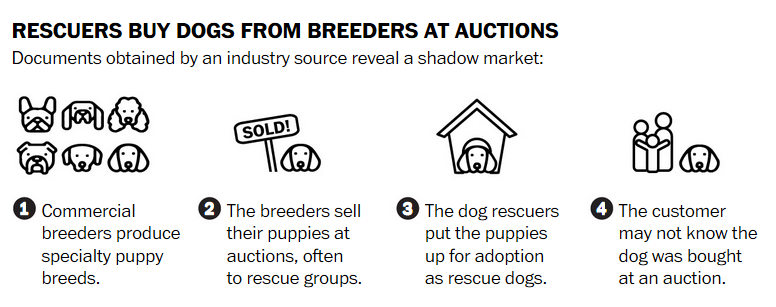Defining Breeders - It is not just about volume
Another interesting post from our IPFD friend and collaborator and Dachshund Breed Health Council Coordinator Ian Seath.
Following his insightful discussion about puppy socialization that was prompted by reports of increased numbers of mini-dachs [(see here)] he has provided a classification of breeders to help define sources of puppies (see: Breeders, the good, the bad and the future). I think it is important emphasize his message and to add a few further comments.
As was discussed in our Supply and Demand theme at the 2019 International Dog Health Workshop - the issues surrounding why, how and from where consumers acquire puppies is a complex issue. Although Ian's categories are very helpful to educate those buying pets, the further complication is that there are better and worse sources within each category of breeder, and there are no guarantees of overall quality, welfare, socialization or short or long term health based simply on the type of breeder. We can likely assume a higher probability of a good 'product' from some categories, but it is not a 'given'. And unfortunately, depending on country, region, licensing requirements and, most importantly, enforcement of any regulations there are few sources of information on specific breeders for prospective buyers.
I am reminded here of our challenges in deciding what is the most important health issue in a breed, i.e., the most common? the most severe? the one that is most topical on social media? the one that seems to be affecting MY dogs? And how we have tried to use ranking systems. e.g. GSID, but  challenges remain. We need to consider breeders from several angles; not only on volume of puppies produced, but also on, e.g.:
challenges remain. We need to consider breeders from several angles; not only on volume of puppies produced, but also on, e.g.:
- Quality of the whelping and puppy-rearing environment. I have seen some commercial breeders with phenomenal facilities and puppies in 'the home' in deplorable conditions.
- Socialization - same thing; producing just one litter at a time does not guarantee that puppies will be well-adjusted to other dogs or people.
- Attention to good breeding practices - e.g. health testing, genetic testing, consideration of impact on the breed (e.g. use of Coefficients of Inbreeding).
- And these are just a few examples but they underline that it is the actual circumstances for each puppy that are important... which may not be reflected in a description of the breeder, per se or their operation.
I have to also point out the probability of a safe and successful acquisition is also variable when getting a dog from a 'shelter' or 'rescue' organization. As discussed previously, [see DHW Supply & Demand resources] unfortunately, among the groups sourcing re-homed pets are both bonafide and questionable/ unknown or downright dodgy suppliers.  There are many doubtful groups that have jumped in to supply the internet-fueled demand for rescues over primary-sourced dogs - even though it has been shown that there are groups buying dogs from large commercial breeders and puppy farms and re-selling them as 'rescues'. It is very difficult to distinguish the well-meaning from those out for commercial gain. And, sadly, just as for breeders, being 'well-meaning' is not enough to ensure health and welfare of the dogs on offer.
There are many doubtful groups that have jumped in to supply the internet-fueled demand for rescues over primary-sourced dogs - even though it has been shown that there are groups buying dogs from large commercial breeders and puppy farms and re-selling them as 'rescues'. It is very difficult to distinguish the well-meaning from those out for commercial gain. And, sadly, just as for breeders, being 'well-meaning' is not enough to ensure health and welfare of the dogs on offer.
So for now, we can try to educate with articles like Ian's, and perhaps lobby for better oversight, but the phenomenal demand that is driving the problem is unlikely to change soon. In fact, consumers also may be 'well-meaning' in terms of intending to carefully research what pet suits their situation and to carefully screen the source...but then succumb to their desire for the trending pet of the moment and wanting what they want right now.
Kennel clubs may also have shied away from regulations, as, there being such a difficulty in defining a 'good breeder', most proposed regulations may be seen as a threat to their members.
 The most important thing is to keep this topic front-and-center in all discussions of dog health, well-being and welfare. And - work across stakeholder groups and internationally for solutions. We look to many of our working groups identified at the 4th IDHW to help us advance...
The most important thing is to keep this topic front-and-center in all discussions of dog health, well-being and welfare. And - work across stakeholder groups and internationally for solutions. We look to many of our working groups identified at the 4th IDHW to help us advance...
Thanks Ian!
See additional information:
 Detailed Discussion of Dog Auctions and Retail Rescue
Detailed Discussion of Dog Auctions and Retail Rescue
 Donate
Donate

1 Comment
Recommended Comments